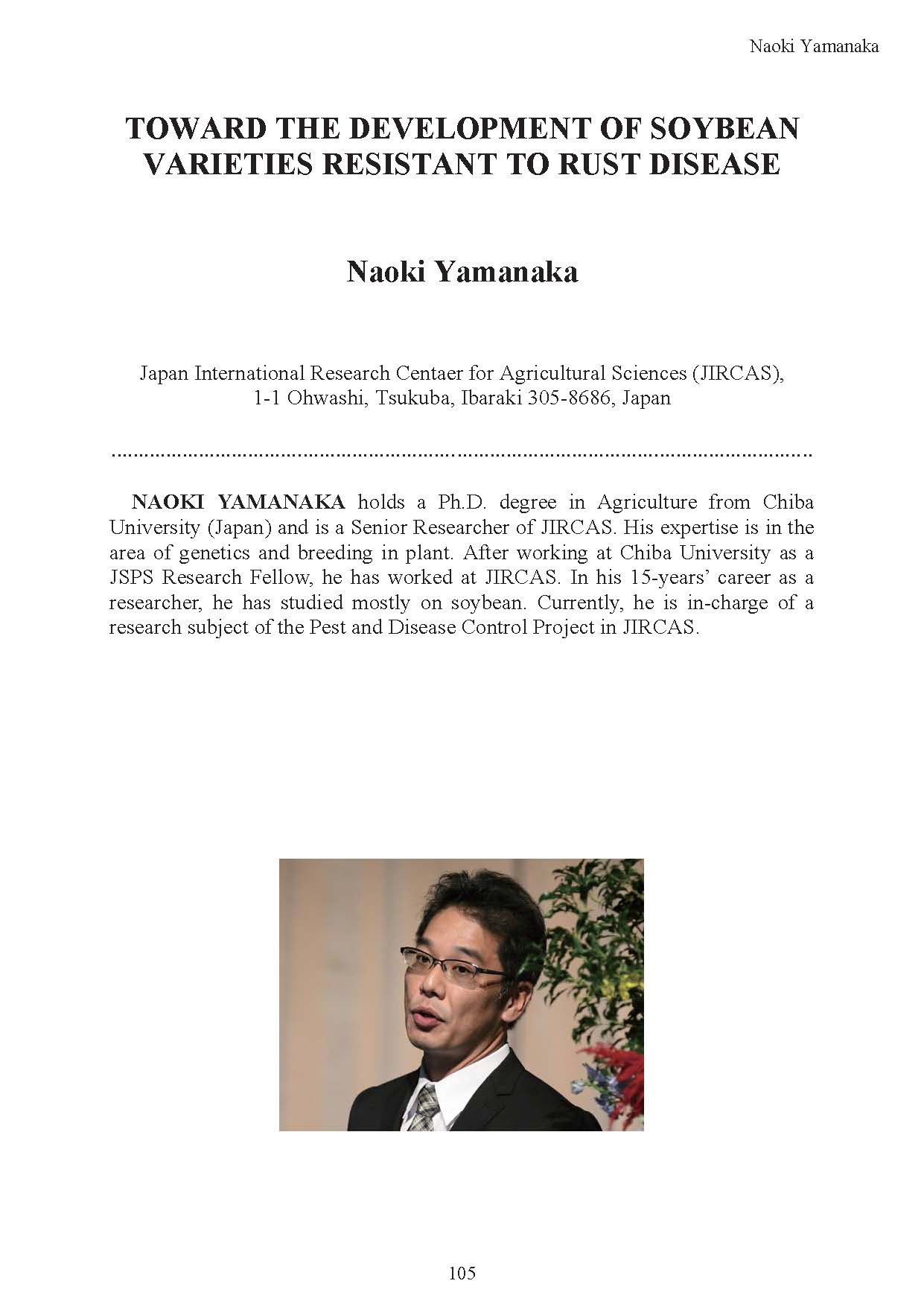Toward the development of soybean varieties resistant to rust disease

Soybean is highly imporatnt for Japan as it is widely used in producing traditional soy foods as well as soybean oil. However, the domestic soybean demand in Japan is mostly meet by imports from other countries. Therefore, it is important for us to ensure stable soybean production in the coutries which supply large amount of soybean to the world market. South American coutries such as Brazil, Argentina, and Paraguay produce more than half of soybean in the world market. But in the tropical and subtropical regions of these countries, a soybean disease, Asian soybean rust (ASR) caused by Phakopsora pachyrhizi is one of the most serious threats to soybean growers together with drought. Thus, JIRCAS has been carrying out collaborative researches on the development of ASR-resistant cultivars with our pertner institutions in South America for more than 10 years.
Firstly, we have developed a reliable method of evaluating ASR resistance in soybean and surveyed geographical and annual variations of ASR pathogen in South America (Yamanaka et al. 2010). Our results reveal that virulence of South American ASR pathogen is highly variable and strong (Akamatsu et al. 2013). Therefore, a resistant cultivar carrying sutable ASR resistance cannot be expected by simply introducing single known major ASR resistance gene. Secondly, we have developed soybean breeding materials and tools which are useful in South America. Specifically, we have 1) identified resistance genes/alleles in the ASR-resistant soybean genotypes whose resistance genes/alleles were unknown (Hossain et al. 2015; Yamanaka et al. 2015a; Yamanaka et al. 2016); 2) explored DNA markers for newly and previously identified resistance loci, and 3) developed and evaluated soybean breeding materials carrying multiple ASR resistance genes (Lemos et al. 2011).
Through these works, it appears that introducing multiple resistance genes into single soybean genotype brings high ASR resistance. This high resistance also acts synergistically in gene pyramided soybean lines, when they are inoculated with the P. pachyrhizi races which are virulent to each of the pyramided genes (Yamanaka et al. 2015b). JIRCAS and our partner institutions in South America have carried out some marker-assisted breeding programs to introduce this high ASR resistance in South American soybean cultivars by utilizing the gene pyramided lines.
| Creator | Naoki Yamanaka |
|---|---|
| Subject | Asian soybean rust Breeding Gene pyramiding Marker-assisted selection (MAS) Resistant variety |
| Publisher | Japan International Research Center for Agricultural Sciences |
| Available Online | |
| Issue | 2016 |
| spage | 105 |
| epage | 114 |
